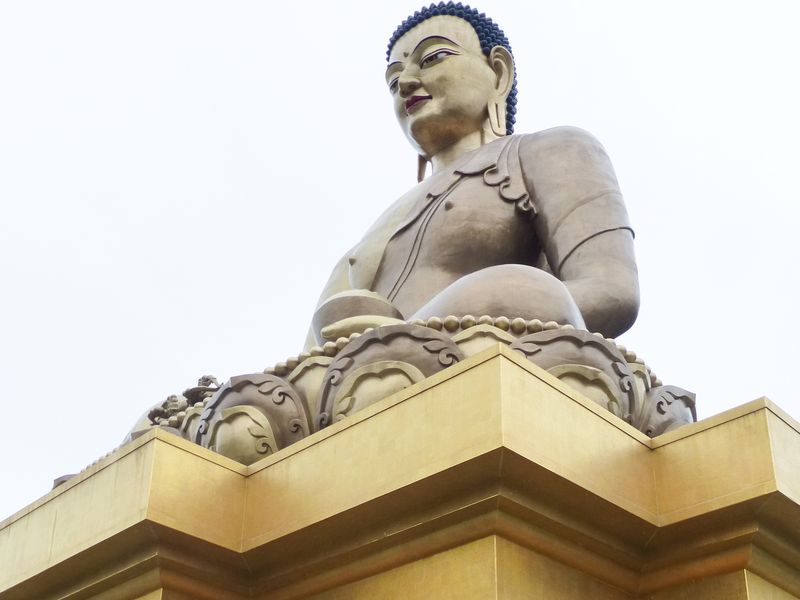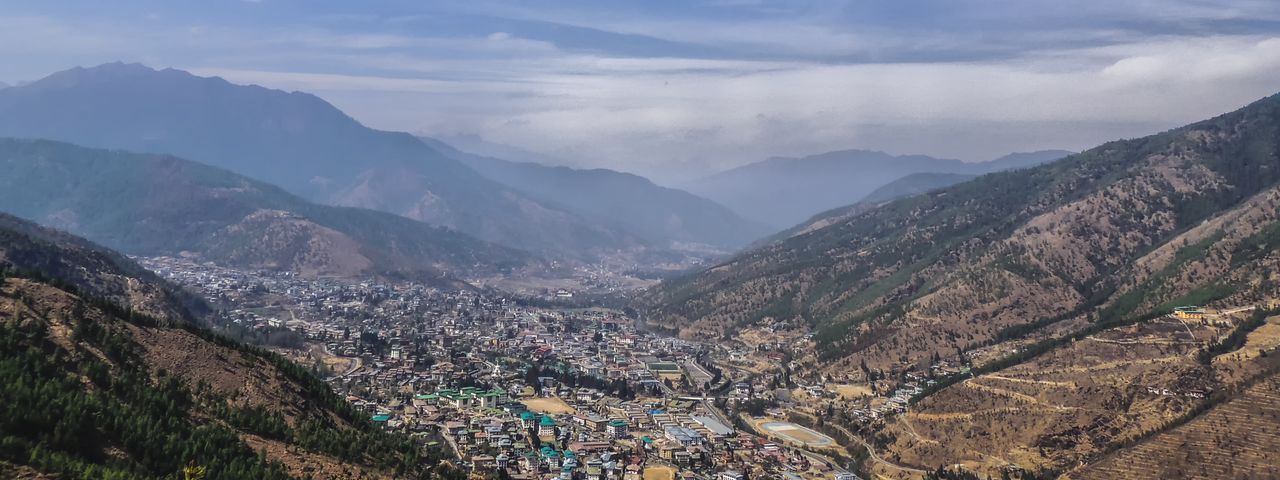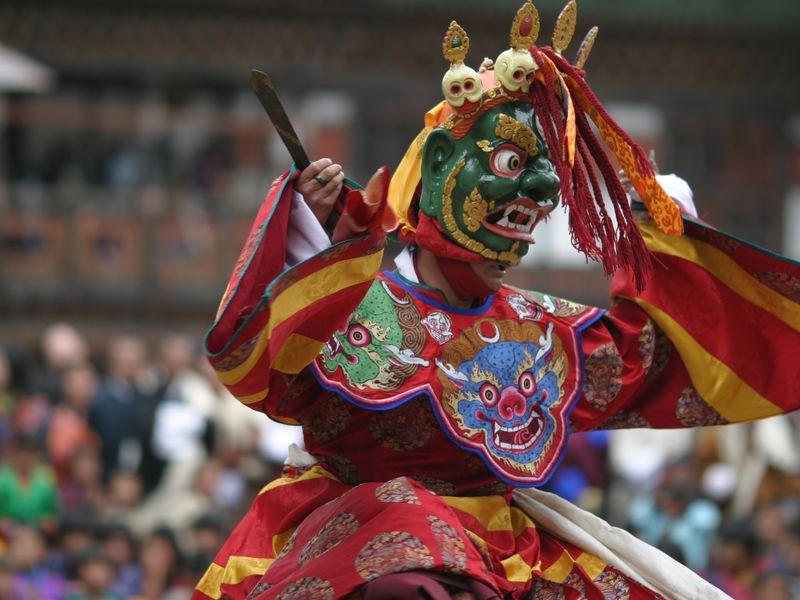Thimphu
Bhutan’s lively capital, Thimphu, is a strange brew of modern commercialism and ancient tradition. Groups of monks in crimson robes troop past shopping malls, karaoke clubs, and cafes with hip coffee culture vibes. The pace of evolution gives some people pause for thought about the future, but for most visitors, this deft balancing act is part of the city’s appeal. Thimphu only became Bhutan’s capital in 1961, and has happily settled into the role, maintaining it’s strong cultural identity and preserving its traditions while growing outwards and upwards.
Three things to do in Thimphu
Obviously there's a lot more, this is just to get you started...
Ancient and modern
Suburban developments spring up as the city centre fills with shops, restaurants and hotels, and the old wooden townhouses now sit side-by-side with apartment buildings. Yet these changes are gradual and coordinated, and Thimphu still flaunts a delightful air of eccentricity. The pavements remain clear of advertising hoardings, statues of Buddhist deities perch atop roundabouts, and a white-gloved policeman brings order to the rush hour using graceful hand signals. With its picturesque valley setting, framed by lush green forests, historic monasteries and snow-tipped mountain peaks, contemporary-style Thimphu can still feel very remote. Change might be in the (wonderfully fresh) air, but if you’re in search of Shangri-La, this would be as good a place as any to start.
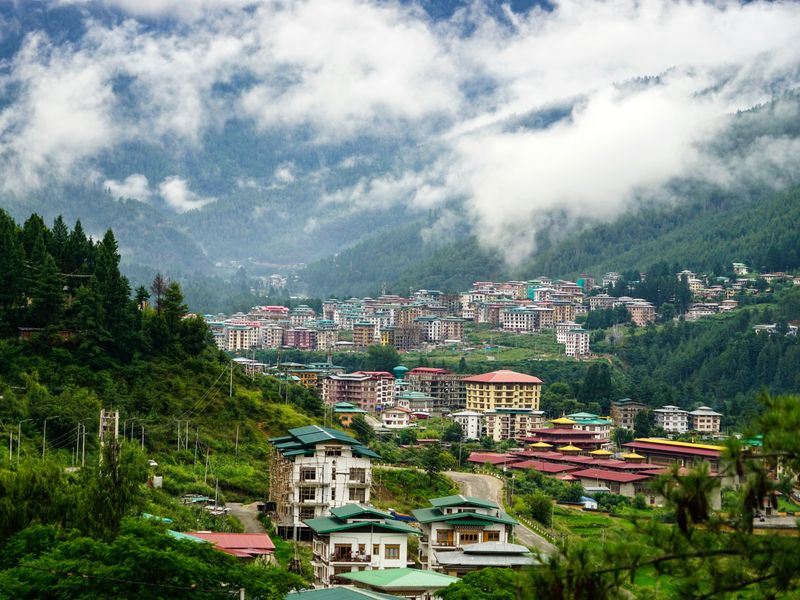
From flying arrows to bustling markets...
Archery is one of Bhutan’s national obsessions. Near the Changlimithang Stadium is an archery ground where bowmen can hone their skills at target practise; if you’re visiting over a weekend you might even catch a tournament. The equipment tends to be quite hi-tech these days, although you will still see the occasional bamboo bow, and many archers still wear traditional clothing. Expect a fun atmosphere as ritualistic dancing and singing accompanies the thud of arrows hitting their marks. If there’s no archery to watch, head to Thimphu’s weekend market by the Wang Chhu river, which sees farmers and traders from across the country set up their stalls on both banks. Urbanites and villagers rub shoulders with travellers to browse fresh organic produce and handicrafts.
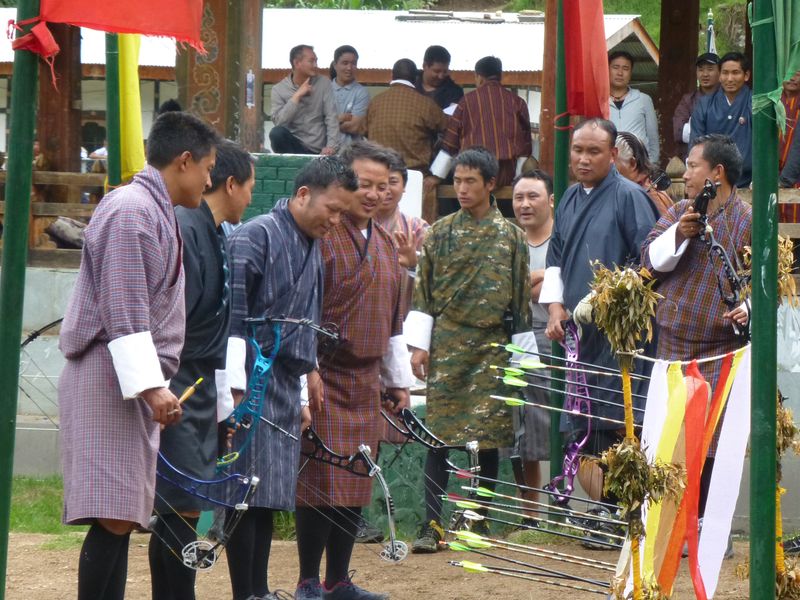
Palaces, dzongs and Buddhas
Dechencholing Palace, on the outskirts of town, is Bhutan’s official royal residence. The current king, however, prefers more modest accommodation in a nearby cottage, and has even been known to invite locals around for tea! On the river’s opposite bank is the Tashichho Dzong, the seat of government in Bhutan. Surrounded by picturesque gardens, the whitewashed dzong has suffered damage over the centuries from fire and earthquake, but in recent years has been renovated and expanded in meticulously traditional architectural style. On a nearby hilltop, the Buddha Dordenma - a gigantic 51-metre tall, gold-plated statue - watches over the valley. Built, it is said, to fulfil an ancient prophecy, the statue’s interior hides an astonishing 125,000 miniature statues of the Buddha.
